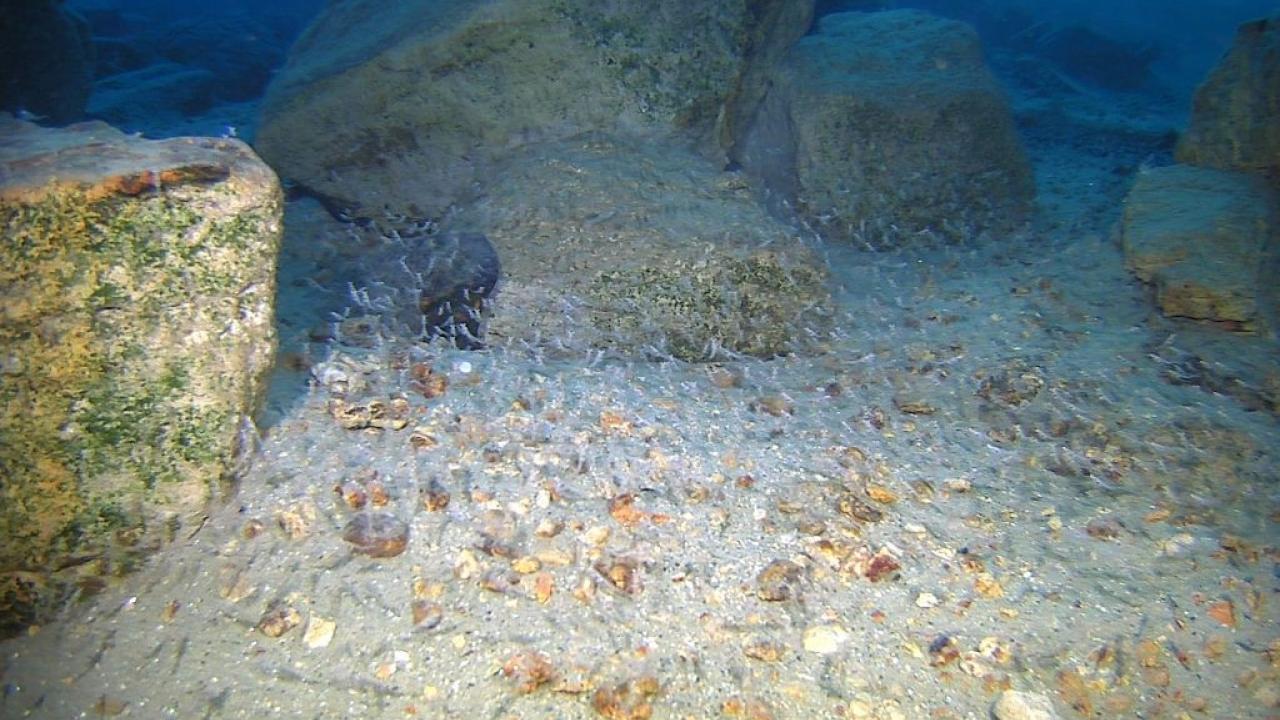
Controlling Invasive Shrimp to Improve Water Clarity in Lake Tahoe
A University of California, Davis, research team led by civil and environmental engineering professors Geoff Schladow and Alex Forrest, along with environmental science and policy professor Steve Sadro, is launching a new project this month to test and optimize a strategy to improve water clarity in Emerald Bay and Lake Tahoe.
Working with the UC Davis Tahoe Environmental Research Center, or TERC, the team aims to reduce the abundance of Mysis shrimp, one of Lake Tahoe’s most ubiquitous invasive species, to levels where they no longer impact the ecosystem of the lake. If the number of Mysis are reduced, native zooplankton species will be able to recover to levels not seen since Mysis was established in the 1950s. This could lead to a significant improvement in water clarity – one of the long-term goals for the lake.
Using real-time, remote sensing to locate the position of high-density Mysis patches, the team can map out the natural variability in the distribution and migration of these organisms through Emerald Bay on a pilot project launching this week, supported by the California Tahoe Conservancy and the Nevada Division of Environmental Protection. If successful, the developed technology and tools will be used to provide real-time guidance for harvesting Mysis in the rest of the lake.
UC Davis has conducted continuous monitoring of Lake Tahoe since 1968 through TERC, which leads research on the water quality, physical processes and ecology for one of the world’s most beautiful and vulnerable lakes and its watershed.
“The Lake Tahoe ecosystem has changed dramatically in the last 50 years, and restoring ecological function of the lake’s native species in place of the invasive Mysis shrimp cannot be overstated,” says Schladow. “Our findings in Emerald Bay will be critical in developing a plan and strategy for Lake Tahoe.”
The use of underwater remote sensing leverages Forrest’s research experience with autonomous underwater vehicles, or AUVs, as data collection platforms to study areas such as large-scale shorelines or beneath ice shelves. If this demonstration is successful, the team aims to use similar platforms in the future in the rest of Lake Tahoe that can’t be surveyed using boat based techniques.
More broadly, Forrest and his team use AUVs and other emerging technologies to probe environmental fluid mechanics, map the depth of water in water bodies and identify invasive species within a given ecosystem.
“Applying emerging technologies and untethered, autonomous robotics enables an understanding of aquatic habitat and ecosystem assessment not available today,” adds Forrest.
Follow TERC on Twitter, and learn more about this research effort:
